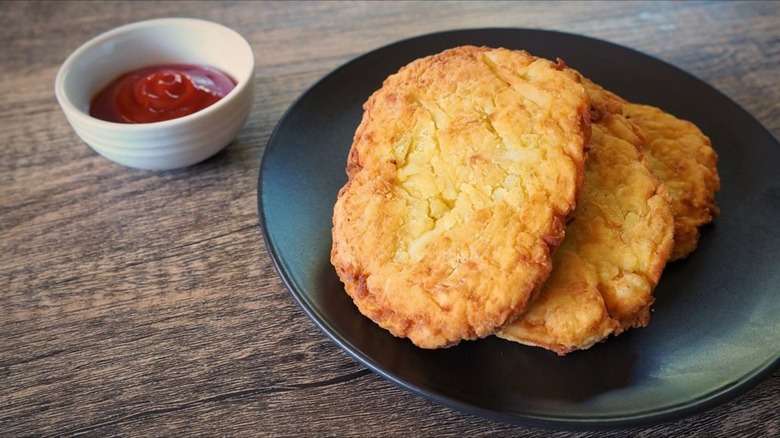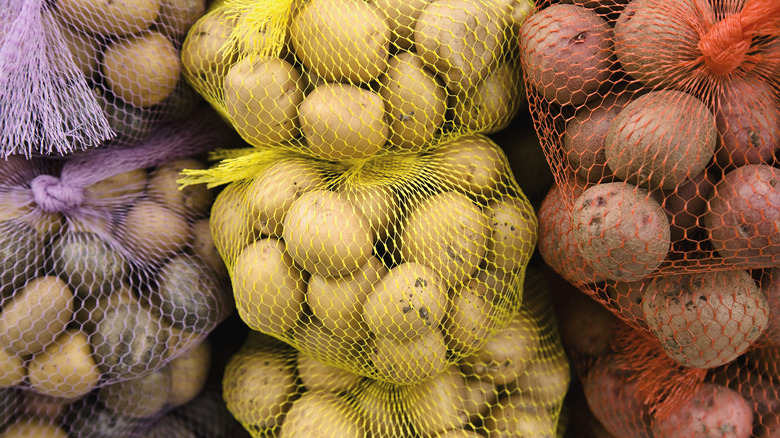Russet Potatoes Ensure Perfect Texture For Copycat McDonald's Hash Browns
While many hash brown recipes call for loose potatoes — the better to sop up the yolk from fried eggs — McDonald's instead caters to a breakfast clientele on the run, so its eggs are scrambled to the point of dryness and its hash browns are formed into solid patties. While the latter may seem like something that you could only make in a food lab or factory, it turns out you can actually make a slightly less symmetrical, but nevertheless tasty, DIY version ... if you're willing to put in the necessary work.
These copycat McDonald's hash browns aren't an exact duplicate of the Golden Arches version, since the latter is flavored with beef tallow, but recipe developer Lindsay D. Mattison chose to skip adding any beef flavoring. Instead, she boasts, "Our recipe is made with all plant-based ingredients, so it's vegan-friendly," though you can always add a little beef bouillon powder in place of some of the salt if you miss the meaty flavor. If it's the texture you're most concerned about, however, note that russet potatoes are the preferred ones. As Mattison says, "Russet potatoes [are] a starchy variety that would create hash brown patties that were soft on the inside and crunchy on the outside." To give the hash browns even more crunch and firmness, she also mixes a combination of corn and potato flour into the potatoes.
What other types of potatoes will and won't work for hash browns?
While russet potatoes may make for the most McDonald's-like hash browns, they're not the only ones that can be used in this dish. Starchy potatoes of any kind will likely do the trick, since the more starch, the better they brown when you fry them. The starch also absorbs water during the boiling stage, which ensures that the inside of the hash browns will be fluffy. Idaho potatoes are not too different from russets since many of the latter kind hail from the Famous Potatoes state, so they will work well in this recipe. On the other hand, Yukon Golds will also produce a decent hash brown despite being a tad less starchy.
Non-starchy potatoes, however, aren't the best choice for making hash browns. As Mattison explains, "If we used a waxy potato ... the texture wouldn't turn out the same." Waxy potatoes, which are generally smaller and rounder than starchy ones, may also be more colorful, as they come in shades of red, purple, and even blue. These more vibrant hues make them perfect for potato salad, because they add visual appeal (or a-peel) if left unskinned, while the potatoes' high moisture content means they are less likely to fall apart when boiled. The moisture, however, means that they won't be too crispy when fried, so it's best to use waxy potatoes for boiling and save their starchier cousins for hash browns.

